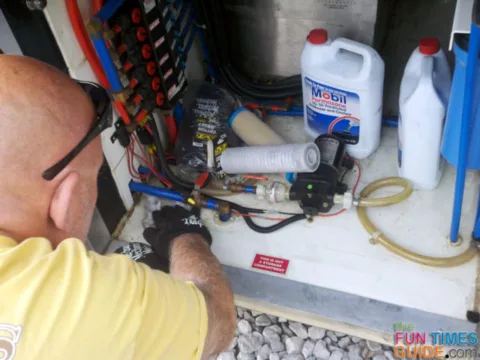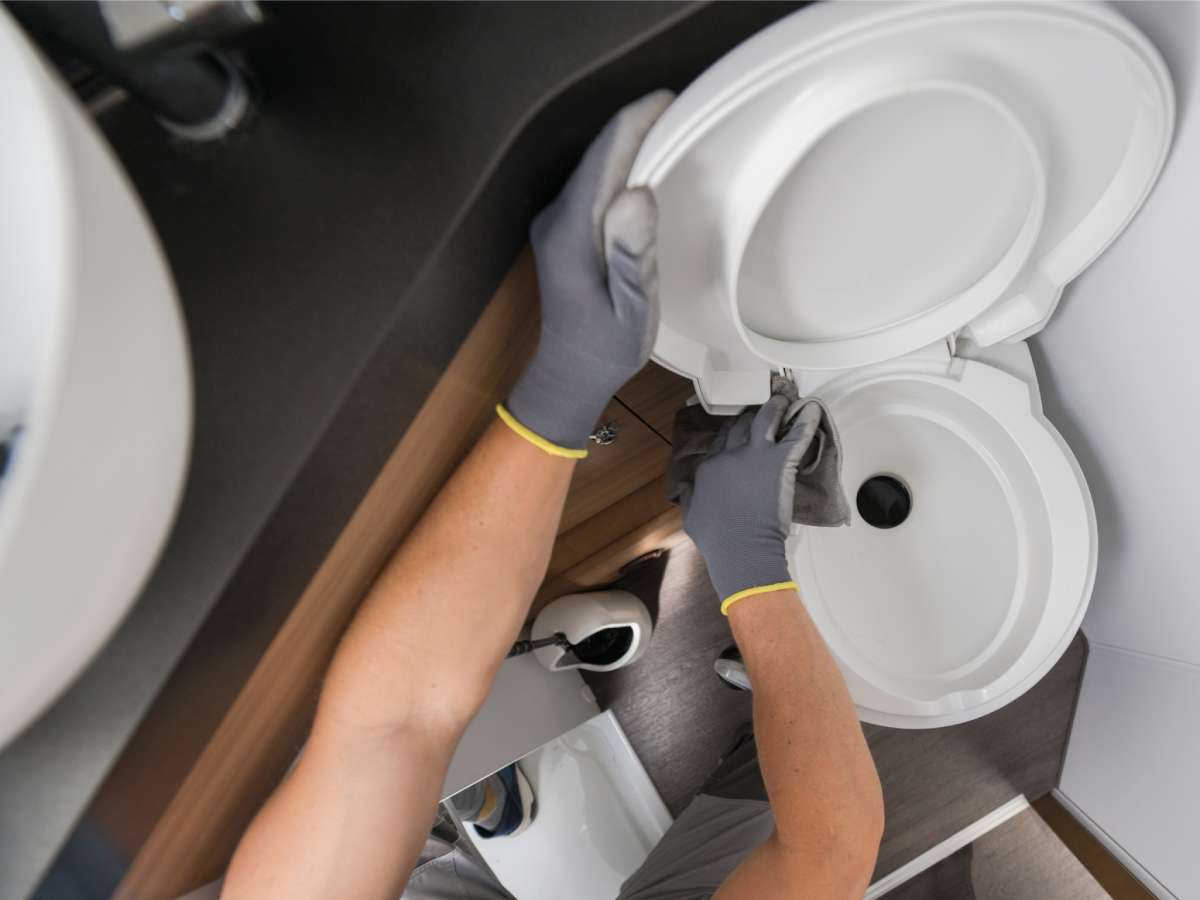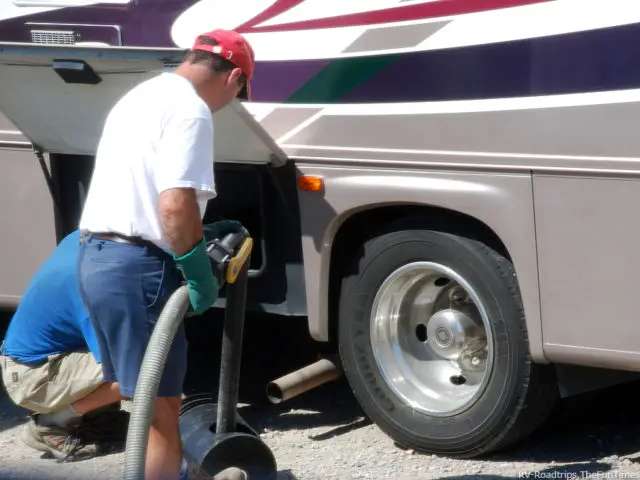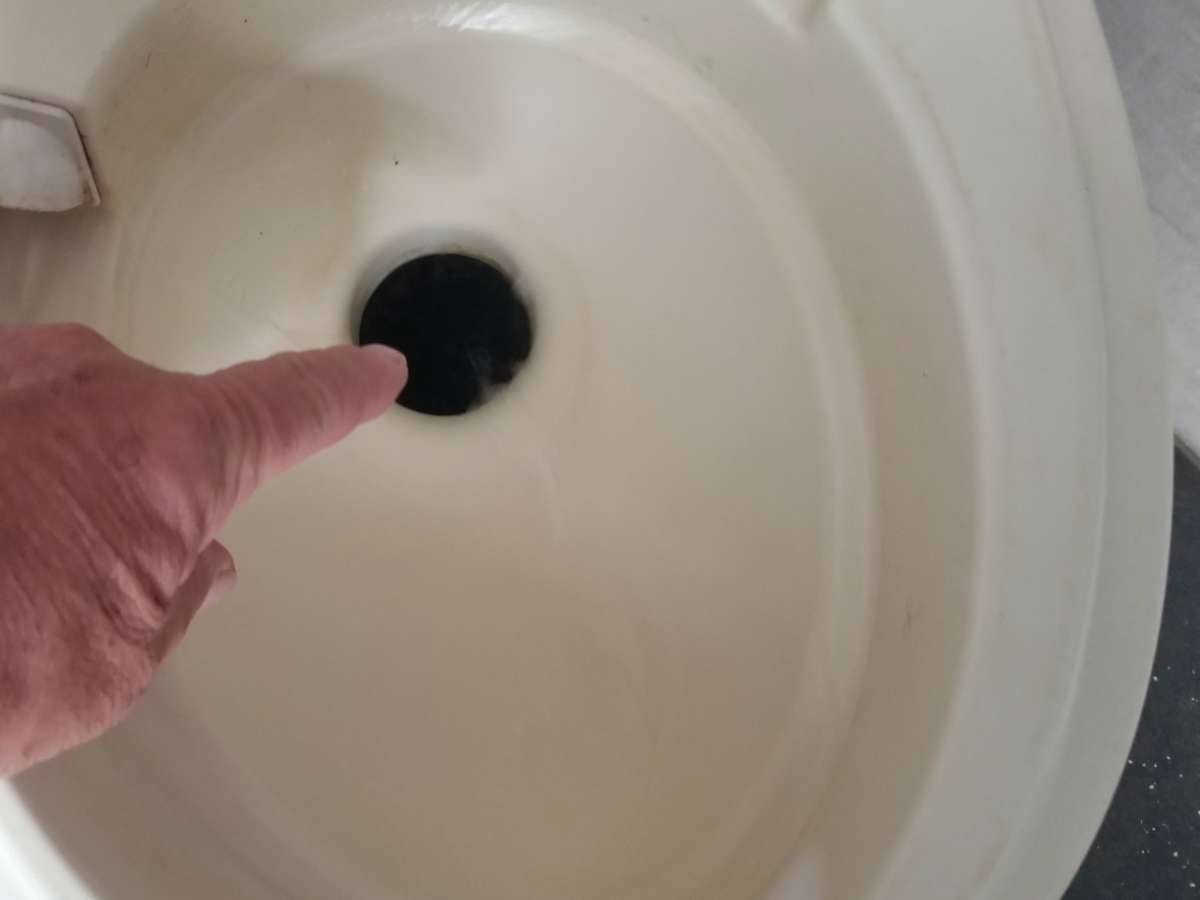Making RV repairs in many cases is something the average RV owner can handle.
There are many similarities between your stick and brick home and your RV home on wheels. The kitchen sink in both has a faucet, and you probably have a shower and toilet in both bathrooms. So, if you have the confidence to tackle a kitchen faucet replacement in your home, you can rest assured that it’s pretty much the same procedure in your RV.
For the less familiar systems in your RV, there are helpful RV educational videos that can take you through the process step-by-step.
You can also use one or more RV repair and maintenance manuals which include detailed parts and instructions.
And YouTube is a great source of online videos showing you how to make RV repairs yourself.
Being able to take care of your own RV repair issues will save you lots of money over going to the RV dealership for your RV repairs, that’s for sure!
RV Repairs… They Happen!
Sure, it would be nice if all manufactured products never wore out, or failed.
Unfortunately, in the RV world — due to weight or cost restrictions and exposure to the elements — some RV components have a higher failure rate than what you find in the average house.
Many of the following RV repairs can be avoided altogether with proper RV maintenance and storage procedures.
Top 10 DIY RV Repairs
Winter can be very destructive to water systems if the RV hasn’t been properly prepared for below-freezing weather.
Common freezing related failures would include:
#1 Burst water lines or cracked fittings
#2 Leaky faucets
#3 Burst water heater
#4 Broken water pump
Assuming that draining all 3 water tanks (Clean, Gray, and Black) is part of your returning home from every trip procedure, the likelihood of splitting a tank from ice is unlikely. However, if you tend to let draining the tanks go until later in the week, putting it off may actually lead to forgetting that simple chore. Then, when that first hard freeze sneaks up on you, the results will be extremely expensive. Replacing RV water tanks is usually a big project.
Plastic is a common material used throughout RVs. Here is where the weight and cost restrictions come in. RV toilets are a common source of problems. When in storage, heat builds up inside the RV, rubber seals get stiff, and anything that controls water flow can deteriorate.
#5 RV toilet doesn’t keep water in the bowl, or the water valve lets water run continually
When you take the protective cap off your waste water drain with the intention of attaching the sewer drain hose, are you greeted with a half gallon or so of nasty water? This can cause all kinds of problems for you. If the waste tank shut-off valves are leaking, the liquid in your Black tank can drain away while you’re hooked up at the RV resort. This will leave a mass of solids in the bottom of the tank that will set up like concrete.
On the subject of waste tanks, does your Black water tank monitor almost always show full? This will be a reoccurring problem on every RV on the road.
#7 Black water tank monitor lights always show full or partially-full, even right after you drain the tank
I think the favorite campgrounds are those back in the woods. The more secluded and private, the better. Nobody likes parking amongst 300 RVs in the middle of an open field. That’s just not camping. Of course, there is a bit of a risk driving down a narrow road to get into the more secluded spots. For example, that one branch that you didn’t notice hanging over the road just might become a “gotcha” moment.
#8 Hole punctured the RV rubber roof
#9 Broken or cracked window
#10 Broken rooftop vents for things like the refrigerator, A/C cover, or sewer breathers
Before you get out the toolbox and dive right in, be sure to consider what’s involved with do-it-yourself RV repairs. If you take care of common home repairs on your own, odds are you’ll do just fine. Following instructions and taking your time will be the key to success.




